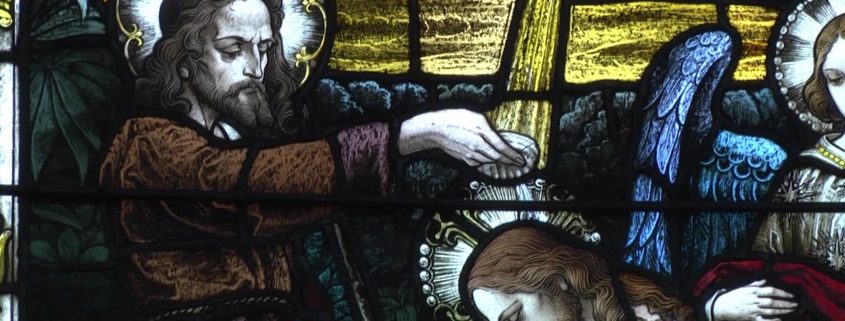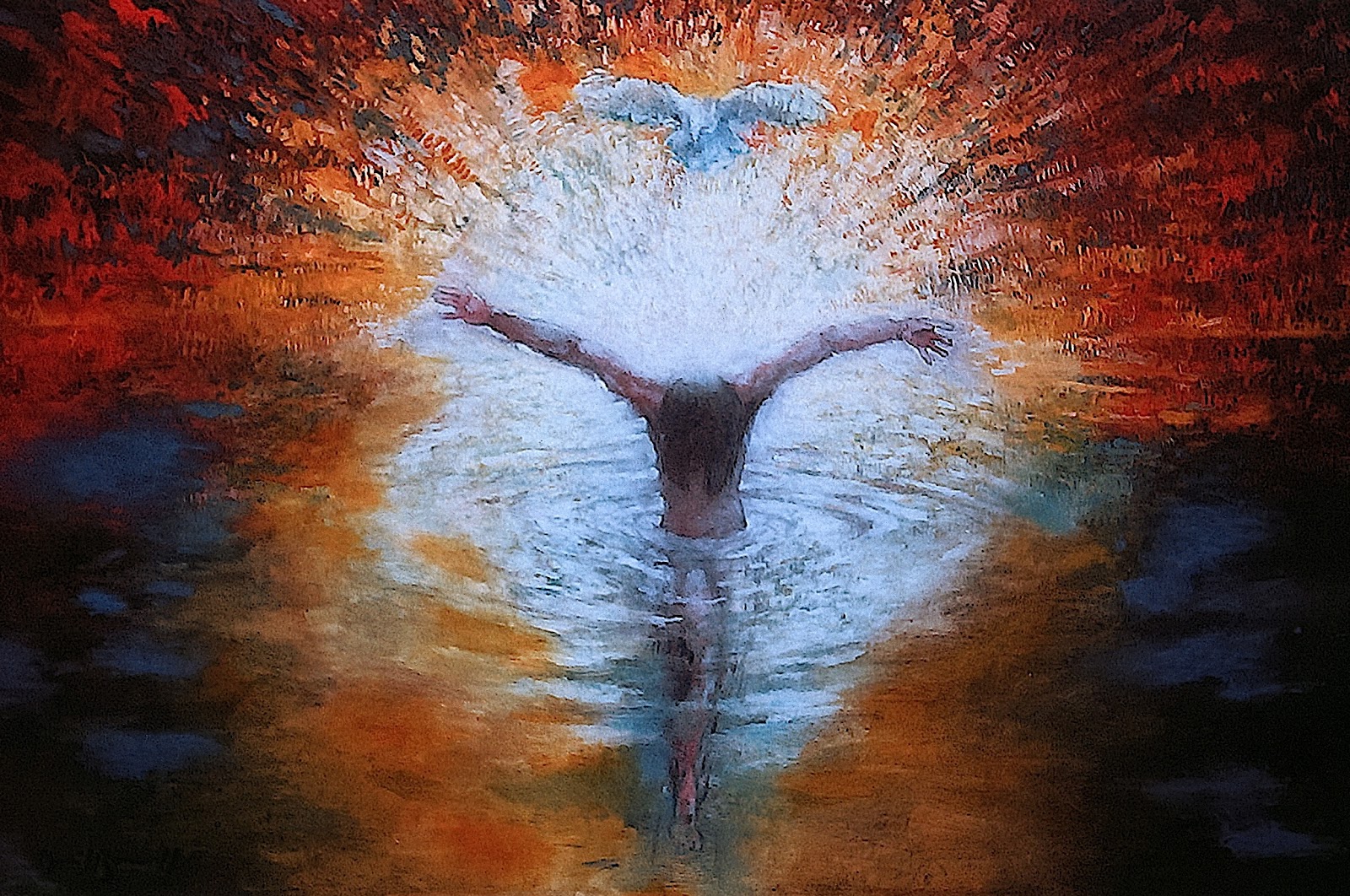Note: Here’s my January piece for Catholic Answers Magazine. Hope you enjoy it!
Monday’s Feast of the Baptism of the Lord marked the official end of the Christmas season. It’s also an annual occasion for many to ask, “Why was Jesus baptized?”
After all, he is the sinless, divine Son of God, and the baptism that John the Baptist administered was “a baptism of repentance for the forgiveness of sins” (Mark 1:4).
Christian baptism is of course greater than John’s baptism, even as Jesus himself is far greater than John (Matt. 3:14, John 3:30). Christian baptism not only forgives sins, but infuses the life of God into the soul, making us God’s children. And the origin of this sacrament is Jesus’ own baptism. Jesus had no need to be cleansed by the waters of baptism, for he had no sins to be washed away. Rather, hesanctified the waters by his descent into them.
Pope Benedict XVI (writing as Joseph Ratzinger), in his Jesus of Nazareth, offers some illuminating insights on all this. There’s a whole chapter in the book on Jesus’ baptism, but here are a few of his key thoughts.
First, in antiquity water conjured up two distinct images: death and life. Benedict notes:
On the one hand, immersion into the waters is a symbol of death, which recalls the death symbolism of the annihilating, destructive power of the ocean flood. The ancient mind perceived the ocean as a permanent threat to the cosmos, to the earth; it was the primeval flood that might submerge all life . . . But the flowing waters of the river are above all a symbol of life (15-16).
Even the physical act of baptism, especially baptism by immersion, represents death and new life: the descent into the waters is a form of death and burial; the rising to a new life is an icon of resurrection.
Looking at the events (of Christ’s baptism) in light of the Cross and Resurrection, the Christian people realized what happened: Jesus loaded the burden of all mankind’s guilt upon his shoulders; he bore it down into the depths of the Jordan. He inaugurated his public activity by stepping into the place of sinners. His inaugural gesture is an anticipation of the Cross. He is, as it were, the true Jonah who said to the crew of the ship, ”Take me and throw me into the sea” (Jon. 1:12) . . . The baptism is an acceptance of death for the sins of humanity, and the voice that calls out “This is my beloved Son” over the baptismal waters is an anticipatory reference to the Resurrection. This also explains why, in his own discourses, Jesus uses the word
“baptism” to refer to his death (18).
The Eastern traditions of iconography pick up on many of these themes, as the current pope emeritus elucidates:
The icon of Jesus’ baptism depicts the water as a liquid tomb having the form of a dark cavern, which is in turn the iconographic sign of Hades, the underworld, or hell. Jesus’ descent into this watery tomb, into this inferno that envelops him from every side, is thus an anticipation of his act of descending into the underworld . . . John Chrysostom writes: “Going down into the water and emerging again are the image of the descent into hell and the Resurrection” (19).
Jesus’ baptism not only is deeply intertwined with the salvific events of the Passion and of Easter, but it also reveals him to be a new and greater Moses. In the Easter Vigil liturgy of the Roman Rite, the paschal candle is plunged into the waters of the baptismal font, much as Moses stretched his staff over the waters of the Red Sea, which God parted (Ex. 14:21-31).
This created a means of escape for God’s people from the stampeding armies of Egypt and its Pharaoh, which are types of sin and Satan. Saint Paul, looking back at this event, refers to it as a prefigurement of Christian baptism (1 Cor. 10:2), which frees us from the rule of sin and death.
The baptism of the Lord also reminds us, of course, of our own baptism. The Church teaches that baptism not only lets us participate in Jesus’ victory over sin and death, but calls us to our own personal holiness and apostolate (sharing our faith). When you boil it all down, this is the essence of how we fulfill our baptismal mandate to become saints.
Who are the saints? The word “saint” derives from the Greek term hagios, which means “the holy ones.” Being a holy person just means being, with God’s considerable help, the person you were created to be.
The Bible says, “without holiness no one will see the Lord” (Heb. 12:14, NIV). This is also why we need to share our faith! If we want everyone we know and love to get to heaven, if we want them to see Jesus, they must become saints as well—no exceptions.
The world tends to value the letters at the end of people’s names—M.D., M.B.A., Ph.D. But Catholics care most of all about the letters we hope one day will come before our names: “St.” This was the ultimate reason the Lord was baptized, establishing the sacrament, and it’s why we are baptized, too.



 Q. This Sunday’s liturgical celebration of The Baptism of the Lord takes us back to the beginning of Jesus’ public ministry. How does his baptism relate to our own?
Q. This Sunday’s liturgical celebration of The Baptism of the Lord takes us back to the beginning of Jesus’ public ministry. How does his baptism relate to our own?